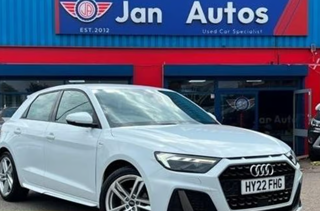Dealers and OEMs require a better process to give consumers confidence when a safety recall arises like Citroen's latest, argues Pete Gillett, founder of Marketpoint Recall.
A stop-drive order is not a recall as usual. It is the loudest alarm an automotive regulator can ring. That’s exactly what happened last month, when the French Transport Ministry issued an urgent warning for around 441,000 Citroën C3 and DS3 vehicles with Takata airbags linked to injuries and at least one fatality.
The message to owners was blunt: Park your car, now. Don’t drive it. Don’t delay. The danger is real.
But as bold as the statement was, it reveals a deeper concern - that even when the stakes are this high, the tools to reach and remedy drivers still fall short.
Safety shouldn’t depend on whether a letter lands, or a warning gets read. Yet in many cases, it still does.
Why are vehicle recall mailshots failing?
A stop‑drive notice is issued when the risk to life is imminent. These airbags don’t just fail, they can explode with fatal consequences.
You’d expect recall systems to be swift, seamless and supported by tech. But for many drivers, the first notice they’ll see is still a piece of paper in the post.
Indeed, a 2025 review found that only around 28% of recalled vehicles in the UK have actually been repaired, meaning 72% remain on the road with safety-critical issues such as airbags, brakes or electrical systems
Put simply, stop-drive orders mean nothing if they don’t reach the driver. And by the time someone finally sees a warning on social media or hears about it from a garage, it may already be too late.
Parts on the move, danger in disguise
A single defective component can turn a safe vehicle into a lethal one. But the reality is that parts move faster than the paperwork can keep up. Dealers often find themselves fitting, removing or inspecting components without full visibility of which ones carry risk, particularly when aftermarket supply chains and parallel imports are involved.
That’s where digital traceability should play a vital role. In theory, we should be able to track a high-risk part from factory to forecourt to fitment. In practice, disconnected systems and data blind spots mean many dealers are flying partially blind.
It’s not enough for the OEM to quietly update a parts list or issue a service bulletin. Dealers need to know what to pull, when and why. That means access to real-time part status, not just stock codes. Because the moment a dangerous part gets missed, the recall fails before it begins.
The dealer as first responder
While manufacturers issue recalls, it’s dealers who turn alerts into action. The on-the-ground role they play is critical; inspecting vehicles, managing bookings, explaining risks and handling the fallout when customers are anxious or angry. But they can’t do it alone.
Dealers need integrated systems that show them which vehicles are affected, whether replacement parts are in stock and how quickly the remedy can be carried out. Without that, they risk either over-promising or underdelivering, and in a crisis that erodes trust fast.
Proactive outreach matters too. Phone calls, texts, service portal alerts are key. These are all tools that dealers can and should use. Mass mailers and email blasts have their place, but they can’t shoulder the full load in a safety-critical situation.
What does ‘Recall Ready’ really mean?
A high-profile recall like this demands more than business as usual. Being ‘recall ready’ means having a dealer network that’s equipped, informed and empowered to act the moment a risk emerges. That includes having automated systems that can flag affected vehicles, queue parts for urgent ordering and send customer reminders as soon as an appointment is missed.
It means having workflows that track progress from first alert to final fix and not scattered spreadsheets or siloed service records.
And crucially, it means custom recall playbooks for each scenario. Not every fix needs the same approach. A brake light issue is not the same as a lethal airbag. Dealers need a tailored strategy for each, built into the systems they already use, not bolted on as an afterthought.
Urgency must meet capability
Citroën’s stop-drive order shows just how serious the consequences of a slow recall response can be. But issuing the warning is only half the job. Without the infrastructure to act quickly and the tools to reach every owner, even the clearest message can fall flat.
In an industry built on trust and movement, we must ensure neither stalls when it matters most.
Stop-drive recalls are rare but when they do happen, we can’t rely on systems designed for a gentler pace. Safety must match the speed of risk. And that starts with a recall strategy that’s ready to go the moment the red light flashes.
Author: Pete Gillett, founder of Marketpoint Recall



















Login to comment
Comments
No comments have been made yet.